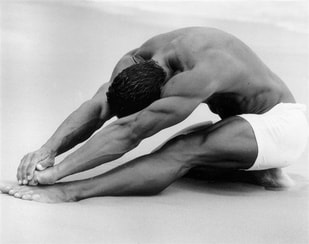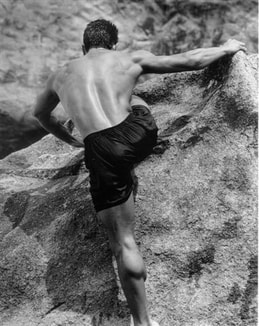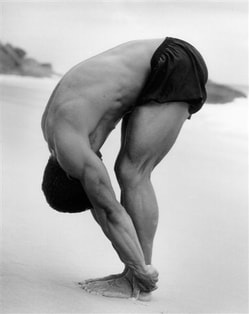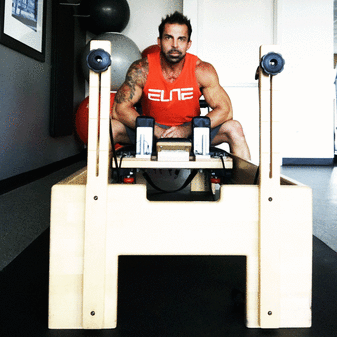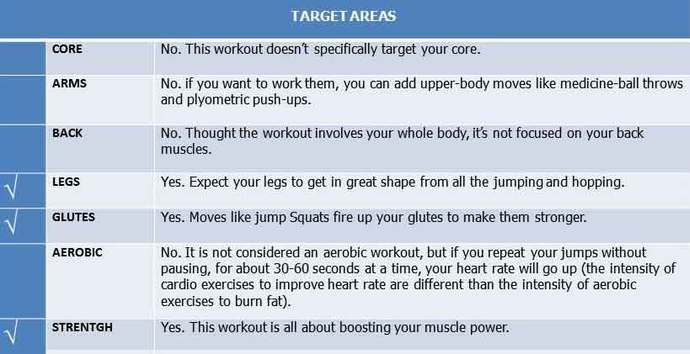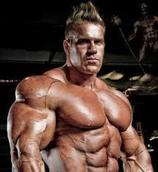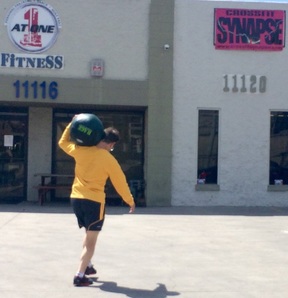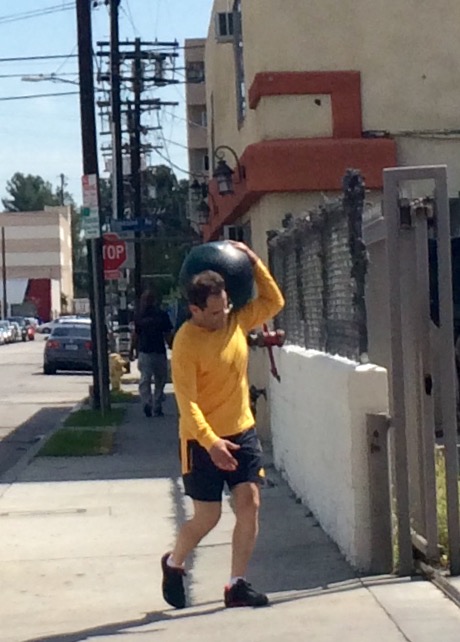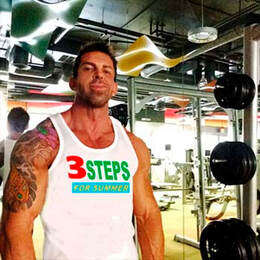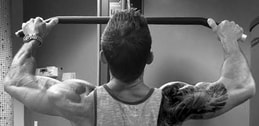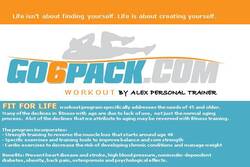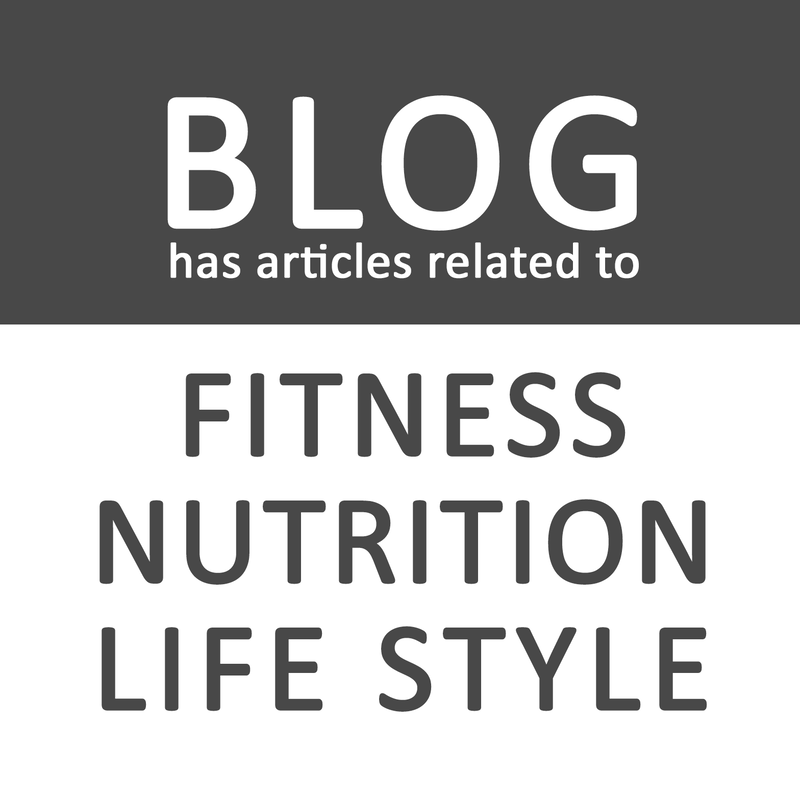|
Samba balances his energy with two daily walks.
He keeps fit and socialized by running and playing in the park three times a week. |
Lifestyle Find Yours.
Samba in front, followed by his friend Batucada. |
|
Today, I wanted to address a question that I often receive due to my fitness brand, GO6PACK Fitness.
Many of you have reached out and asked me about the timeline for developing six-pack abs. I wanted to take this opportunity to share my answer, which remains consistent and reflects the realistic approach I take in my training programs.
0 Comments
Ready to transform your booty? Discover the ultimate guide to sculpting your dream bubble butt with these powerful exercises. Watch the video below to see them in action, including variations with resistance bands for added intensity!
Discover the unique advantages of resistance bands and weights for strength training. Explore how these tools offer similar benefits while also providing distinct advantages in different scenarios. Read on to find out which option suits your needs best!
As we get older, we can lose inches off our height, but why? And what can be done about it? Why do we shrink as we age?It is a strange fact of life that although our noses keep growing as we age, we also start shrinking. The older we get, the shorter most of us become. In fact it is estimated that during every decade after the age of 40, people generally lose ¼ - ½ an inch, an amount that increases every decade. Unfortunately, women tend to also lose more height than men, and are more prone to bone conditions like osteoporosis. The Baltimore Longitudinal Study of Aging discovered that women lost, on average, 2 inches between the ages of 30 and 70, and over 3 inches by the age of 80, while men lost just over an inch by the time they turned 70, and 2 inches by the time they hit the big 8-0. We produce less of the hormones that help us to repair or replace cells [as we age]. This means our bones become weaker. Our vertebrae – the bones that help keep us upright – get compressed and rubbed all the time, so we might lose some of the actual bone. Our muscles and ligaments also get weaker, which adds to the effect. The pressure on our spine to stay upright, even as the muscles around it become less effective, means discs between vertebrae can become flattened and the spaces between our joints becomes smaller. It’s also the case that the arches in our feet flatten too, leading to further height loss. Four ways to prevent shrinking:Although shrinkage cannot be avoided completely, it is possible to slow the process and give your spinal column the best chance of being stronger and straighter for longer. 1. Top up your calcium levelsIf you’re over 50 the National Institute of Health recommends that you get 1,200 milligrams of calcium every day to keep your bones healthy and strong. Make sure you’re getting that by drinking milk, eating a wide variety of fruit and veg, and taking additional vitamin supplements if necessary. 2. Work outCertain studies have found that people who exercise regularly during their younger years tend to lose half as much height as people who didn’t. However, it’s never too late to build muscle and strengthen your bones. Running, jumping and doing weights can all really make a difference. 3. Avoid bad habitsAlcohol can inhibit your body from making the most of its calcium supplies, while smoking is bad for your overall health and can be particularly damaging to your bones. Cut down, or just stop if you can. 4. Think postureFixing your posture so you are not crumpling or straining you spine can also help you boost your height, and it will train your muscles to be long and strong in the process. REFERENCE: https://www.theguardian.comWhile you can’t change your genes, you can make the most of what you were born with by training for your shape. We all have different body types. Some of us are naturally skinny; some naturally heavy. Our bone thickness and structure differ, too, as do traits like our muscle belly length and metabolic rate. When it comes to improving your physique, the better you understand your particular combination of genetic traits, the greater your chances are of building the physique you're after. In the 1940s, psychologist W. H. Sheldon developed a system that divided humans into three basic body types. While not everyone will fall neatly into a single type, understanding these types can help you create a workout optimized for your genetic makeup. Here are descriptions of the three main body types, followed by ways to customize workouts for each one. The Skinny EctomorphYou know those people who seem to be able to eat all they want whenever they want and never gain an ounce? Those people are probably ectomorphs. They're often naturally lean, which is a great upside. The downside, especially if they are trying to improve their physiques, is that they have a hard time gaining muscle mass. Some people think that all ectomorphs are tall and skinny. Many tall people do happen to be ectomorphs, but height alone isn't a determining factor. Rather, body type is based on factors that include skeletal proportions, bone density, and metabolism. For instance, ectomorphs tend to have narrow shoulders and hips, light bones, and fast metabolisms. Their wrists, knees, and ankles are typically smaller than average. The Square EndomorphEndomorphs have heavier bone structures and often squarish torsos, with wide waists and large hips. Their joints are often thicker, and their metabolisms are slower. Unlike ectomorphs, endomorphs have no problem adding mass to their bodies. Their problem is getting rid of it. If people with this body type want to get lean, they must be very diligent about eating well and getting lots of cardiovascular exercise. The Perfect MesomorphOh, to be blessed with a mesomorphic body type. Many of the greatest bodybuilders in history, including Sergio Oliva, Lee Haney, Dorian Yates, and Ronnie Coleman, are perfect examples of this lucky group. Their bone structures, with wide clavicles and narrow hips, naturally form the coveted V-taper. Their joints are big enough to support large muscle mass, but small enough to create a pleasing visual proportion between muscle mass and joint. If you took Coleman's huge quads and put them on a man with big hips and knees, they wouldn't look nearly as impressive. But with Coleman's narrow hips and small knee joints, those quads look superhuman. And then there's the mesomorphic metabolism: It is ideal, making this body type genetically predisposed to gain muscle, not fat. Train For Your Body TypeChances are you're not 100 percent ectomorph, endomorph, or mesomorph. Instead, you probably fall somewhere along the spectrum. You might lean more toward being an ectomorph, yet be able to add muscle mass, making you an ectomorph with some mesomorph qualities. Or, you might have the basic body shape typical of a mesomorph, but gain fat if you're not careful, which would put you somewhere between a mesomorph and an endomorph. Having said that, you're probably closer to one body type than another. Once you know which type that is, you can start creating the most appropriate training program for that body type. Ectomorph TrainingEctomorphs tend to have higher metabolic rates, with their bodies acting like crazy calorie-burning furnaces. If this is you, be careful not to over train, and make sure you allow plenty of time for rest and recovery. It you tried to train for two hours a day, six days a week, you're probably doing too much and need to build more rest days into your routine. In fact, ectomorphs should probably not weight train more than two days in a row. Many find that something like Monday, Tuesday, Thursday, and Friday is ideal. Your workouts should be short and to the point, rather than marathon sessions. Put a time limit of one-hour maximum on any given workout. Focus on basic, compound movements and straight sets in the 8-10 rep range. Forget about higher reps, dropsets, and supersets, and other intensity techniques that will only make it harder for you to recover before your next workout. Limit any extracurricular physical activity, and rest as much as possible. Finally, if you're an ectomorph and want to improve your physique, avoid frequent bouts of prolonged cardio, which can tear down muscle tissue. If you feel compelled to do cardio, limit yourself to just a few minutes to warm up on leg day. Focus your attention on conserving energy so you can add, not subtract, muscle mass. Endomorph TrainingBecause they have slower metabolisms, endomorph usually benefit from greater overall training volume and frequency, and from doing substantially more cardio than the other two body types. When endomorphs focus on lifting heavy, they tend to gain more fat. If you're okay with that, then train more like a powerlifter, with lower reps and plenty of rest between sets. But if you'd rather carry less body fat, keep your rest periods shorter and move quickly from exercise to exercise and from set to set. This faster pace will burn more calories, as will judicious use of supersets, dropsets, and so on. There is no need to go crazy with higher reps, but try to work in the 10-12 range for upper body, and do 12-20 reps for lower-body movements. Endomorphs can and should also perform an even mix of compound and isolation movements. Squats and deadlifts will do far more to stimulate your metabolism and burn calories than things like leg extensions or cable cross-overs. And if you tend toward the endomorph end of the spectrum, you'll get the best results, in terms of body composition, by skipping rest days. On days that you're not weight training, go to the gym or get outside and work hard on your cardio. Mesomorph TrainingIf you hit the genetic lottery and are anything close to a pure mesomorph, whatever kinds of hard and consistent training you do will probably yield spectacular results. You can train longer and hit muscle groups more frequently that the other two body types, and make major gains. In fact, you'd probably be missing out if you didn't work harder.
As a mesomorph or near-mesomorph, your workouts can be a bit longer, in the 60-90-minute range, and can be a mix of compound and isolation movements, with reps as low as the 4-6 range or as high as 15-20. Either way, you're golden. In general, mesomorphs can pretty much emulate the routines of pro bodybuilders and make very nice progress, because you're essentially like them. Although it should be noted that if you are chemical-free, train with a bit less volume and frequency than a chemically-enhanced athlete, since products designed to help build muscle mass can also aid recovery. As far as cardio goes, you don't need to avoid it like ectomorphs or hit it hard and heavy like endomorphs, a moderate amount will do you just fine. Reference: bodybuilding.com There’s no denying that technology has transformed the way we live, from how we communicate and share information to how we navigate through life (thank you, Google Maps!). In other words, we’re glued to our devices. In fact, according to recent research, people spend approximately five hours every day on their smartphone, computer or tablet. And it might be taking a toll on your body. Chances are you’re looking down at your device to read this article — head forward, shoulders rounded and back slumped, putting yourself at risk for the aches and pains now known as ‘text neck.’ “You can stretch out and exhaust the paraspinal and upper back muscles from poor posture,” says Dr. Jonathan Stieber, orthopaedic spine surgeon and clinical assistant professor of orthopaedic surgery at the NYU School of Medicine. As the upper back rounds, the head and neck start to jut forward and out of alignment from your spine. No wonder your body hurts. We know there’s no way you’re ditching your devices — so what can you do about the pain? Read on to find out. How to Prevent Text Neck and Improve Your PostureThe Problem: Slouching Your mother was right: Good posture matters. Pain related to technology use is often due to poor posture and ergonomics. When you’re sitting in front of your computer with a certain posture for hours on end, your body gets used to being in that position. It becomes your new normal. Imagine if you’re arm wrestling all day. Your bicep muscles will be strained and they’re going to let you know that they are tired. While you usually don’t see severe problems like herniated disks or pinched nerves resulting solely from overuse of technology, it can exacerbate an underlying condition. And be careful when you go for your weekend run or CrossFit WOD. Your body may be shocked because you’re bringing it out of the position it’s accustomed to. You can be predisposed to injury. The fix: Make sure you have the appropriate monitor, desk and chair height for you. Can’t buy a new desk? Keep your head is in a neutral position with your monitor at eye-level. You want to have the height of the chair so that your feet can rest comfortably on the floor and your knees are at or just below the level of your hips. Sitting up straight might not come naturally at first. It requires diligence, but more importantly, practice. As with all things, active practice will help solidify proper posture as habit. One sign you’re not doing it right: If anything in your body feels achy or uncomfortable after prolonged use, it’s your body’s way of screaming at you to change position and find a better one because it’s struggling to make your current posture work. Frequent breaks from the screen can help, even if it’s just two minutes every hour. Use the breaks as a reset. Set reminders on your phone or computer or use a Post-It note. These small cues can make a huge difference. The Problem: Text Neck If you’re one of the 64 percent of American adults who owns a smartphone, look up now. Recent research from Dr. Kenneth Hansraj, chief of spine surgery at New York Spine Surgery and Rehabilitation Medicine, found that staring down at your phone can put incredible pressure on your neck and spine. Tilting your head forward 15 degrees places an additional 27 pounds of stress on the cervical spine. A 60-degree angle — the angle at which most of us view our phones — increases that stress to 60 pounds. That’s like carrying around a seven-year-old on your neck. Tablets also encourage you to flex your head forward. And, with bigger screens, you’re more likely to stay in that position for longer periods of time. The fix: The easiest way to address text neck is to change the way you hold your phone. Bring the screen to eye level so your head is not slouched forward or too high. This way, you don’t have to be in a forward-head posture for a prolonged period of time. When using a tablet, it is recommended buying a case that allows you to prop up the tablet on a table. To prevent stiffness in the neck, it is recommended neck rotations – look gently to the left and right, 10 times on each side. Try to perform these every hour throughout the day. 3 Posture Exercises to Balance Your MusclesStrengthening and stretching your muscles may also help alleviate some of that nagging pain. These three quick exercises can help combat technology-induced slump.
1. Shoulder Blade Pinches This move will help to strengthen the muscles of the upper back, which tend to get lengthened and weakened when you slouch. How to: While sitting or standing straight, pinch your shoulder blades together and back. You’ll feel the front of your shoulders roll back. Hold for a few seconds, release and repeat. Perform 10 reps every hour throughout the day. 2. Pec Stretch While slouching results in overstretched and feeble upper back muscles, it also leads to short and weak pecs, according to Balmes. How to: Stand in a doorway and place your forearms against the frame of the door, with your elbows at shoulder height. With one foot forward, draw your shoulder blades together on your back and gently lean into the door. Hold the stretch for 30 seconds, then repeat once more. Perform this stretch three to four times a day. 3. Chin Tuck A double chin may be a selfie no-no, but it can be good for your posture. Chin tucks strengthen the neck muscles and help you pull your head back into alignment. How to: Sit up tall in a chair and keep your chin parallel to the floor. Without tilting your head in any direction, gently draw your head and chin back, like you’re making a double chin. Be careful not to jam your head back. You should feel a stretch along the back of the next. Release your chin forward. Repeat. You can perform 10 reps every hour throughout the day. While the best advice is to take frequent breaks from your computer or cell phone, these exercises, along with improving your posture, are good preventative measures. If this doesn’t relieve your pain, know that your problem may be more serious and seek out an orthopedic doctor or a physical therapist. References: Text neck article from Dr. Jonathan Stieber, orthopedic spine surgeon and clinical assistant professor of orthopedic surgery at the NYU School of Medicine and Dr. Ryan Balmes, Board Certified Clinical Specialist in Orthopedics Sports Physical Therapy.
With increased muscular endurance, your muscles are able to exert force for extended periods. Increased endurance enables you to perform everyday tasks without fatigue. Additional benefits include improved muscle tone as muscles are lengthened and strengthened without appearing bulky. Increased Core StrengthExercising on the Pilates Reformer requires proper form and technique. The focus of proper positioning is within the core, your abdomen and lower back muscles. By conditioning the core muscles, they will contract with all movements to stabilize and align your spine. A strong core will increase the effectiveness of all exercises due to your ability to maintain proper alignment. Core strength increases your ability to generate power to your muscles and decreases the risk of injury Improved PostureWorkouts on a Pilates Reformer will improve your spinal alignment. With improved alignment, your muscles will strengthen to improve spinal support and stability. Improved posture will lengthen your joints giving you a taller appearance. Muscular imbalances will be corrected decreasing the risk for injury, especially to the lower back. Awareness of proper posture during exercise will carry over to awareness of proper posture when performing everyday movements. Increased FlexibilityFlexibility is the range of motion of your muscles and connective tissue. Workouts on a Pilates Reformer require your muscle groups to move through a full range of motion. Improved flexibility decreases strain and stress on your joints and muscles. Muscles contract with increased efficiency, and workouts are more effective. Improved flexibility reduces stiffness, soreness and the chance of injury. You can perform everyday movements with less strain and fatigue. Improved BreathingPilates workouts emphasize proper breathing. Breathing becomes deeper and less frequent, resulting in improved relaxation. Benefits include increased lung capacity and breathing efficiency during workouts and at rest. Your lungs are better equipped to supply your body with increased oxygen during workouts. Energy levels increase during exercise and at rest. Reduced Body FatExercise increases your metabolism, your body's ability to burn calories. Increased muscle mass increases the number of calories burned. When the amount of calories burned is more than the amount of calories eaten, excess body fat is burned and used for energy to meet the increased demand. REFERENCES: www.livestrong.com
Plyometrics are the cool kid in the exercise world. Remember the fun you had as a kid, hopping, skipping, and jumping around the playground? The exercises you do with plyometrics mimic those dynamic moves. What’s not to love? Like the cool kid in school, plyos tend to be more flash than substance. It’s definitely nice to have flash. But flash without substance is almost always problematic. Plyometrics, also known as "jump training" are exercises in which muscles exert maximum force in short intervals of time, with the goal of increasing power (speed-strength). This training focuses on learning to move from a muscle extension to a contraction in a rapid or "explosive" manner, such as in specialized repeated jumping. Plyometric are primarily used by athletes, especially martial artists, sprinters and high jumpers, to improve performance, and are used in the fitness field to a much lesser degree. FACT: PLYOMETRICS EXERCISES CAN CAUSE SERIOUS INJURY
Here’s a review of the literature: An athlete's hunger for success is fueled by a constant supply of new products and training principles. During the past decade plyometric training has increased in popularity and is now considered to be an essential training method for athletes competing in a wide variety of sports. Many respected coaches considers plyometrics to be the 'icing-on-the-cake' that can enhance an athlete's ability, allowing him or her to remain at the cutting edge of their sport, when performed correctly, plyometrics can improve speed, strength, acceleration and explosive power. So should we all go out and start leaping from tall buildings in an attempt to improve our athletic performance? Well, the answer to that question once you've studied the scientific research is: look before you leap. Not everyone in the physical preparation industry is as enthusiastic as them. Just as steroids have now been proven to be detrimental to an athlete's health, there is growing evidence to suggest that gains made from practicing plyometric drills may be outweighed by the risk of severe injuries attributed to this training method, if practiced incorrectly. What type of injuries? Spinal shrinkage -Sports participants taking part in repeated high impact activities have been identified as a high-risk group for back pain and injury. The lumbar portion of the spine has been highlighted as one as of the area most susceptible to injury. Studies indicate that the musculoskeletal system is subjected to impact forces between 3-5 times body weight as a result of landing from a plyometric activity (depth jumps). They clearly shows significantly higher levels of spinal shrinkage are experienced when additional loads are applied; even when the platform height is just 26cm. Patellar tendinitis, or 'jumpers knee', is an inflammatory condition involving the infrapatellar tendon. Strong eccentric contractions produce high levels of force, and repeated stretching of the extensor muscles results in damage to the tendon. The movement most frequently associated with patellar tendinitis is jumping, The knee, ankle and hip are inevitably exposed to high forces. Injuries associated with fatigue, such as tendinitis and synovitis, can result from excessive plyometric training. If you have heart disease, high blood pressure, or high cholesterol, your doctor may recommend a lower-intensity type of exercise. If you have diabetes, you may need to make some changes to your diabetes treatment plan, based on how many calories you are burning. Plyometrics is not for you if you have any diabetes-related nerve damage, as this will make you more likely to get injured. Do you have arthritis or other bone or joint problems? Plyometrics is not a good choice for you. Look for a workout that can help strengthen your muscles without stressing your joints. Plyometrics is also not for you if you are pregnant. Your belly’s growing size will throw off your balance. You could fall or get injured. The weight of your growing baby stresses your knees and ankles, and jumping adds even more stress. Ligaments that help stabilize your joints grow a little more lax during pregnancy, making injuries more likely. If you have any physical limitations, choose other strength-building exercises that will be safer for you. CONCLUSION: IF YOU ARE NOT A PROFESSIONAL ATHLETE, AND JUST WANT TO LOOK AND FEEL GOOD, YOU SHOULD AVOID PLYOMETRICS EXERCISES.
MOST BODYBUILDERS EMPLOY ALL SORTS OF INTENSITY BOOSTERS. HOW IS IT THAT YOU'VE MANAGED TO DO SO WELL BY DOING ONLY STRAIGHT SETS?
It's because always worked for me. I don't understand why I would want to change something that's working. I never incurred any significant injuries and I was continually making gains over the years, so I didn't see the need to change things up. THE FIRST EXERCISE IN YOUR ROUTINE IS OFTEN CONSIDERED THE MOST IMPORTANT BECAUSE YOU CAN ATTACK THE WEIGHTS BEFORE FATIGUE SETS IN. HOW DO YOU CHOOSE WHAT YOU DO FIRST? The first exercise in my routine is almost certainly a compound [multi-joint] exercise. With this kind of movement, you can push the most weight because more muscle groups are involved in the lift. For those reasons, I always started my chest workout with a dumbbell or barbell movement. You get better range of motion with free weights, but later in my career I focused more on machines because of the degree of safety they afford. I'm a big user of the Hammer Strength decline machine, but those didn't even exist, at least in my gym, when I first started training in 1991. DO YOU START WITH A PARTICULAR BENCH ON CHEST DAY? I never really had any weak [chest] areas that I needed to significantly bring up, so I varied things up but not a whole lot. For one, it depended on the gym I was in; I traveled a lot and was always training in a new facility. Occasionally that allowed me to try out new equipment, but sometimes I was limited, as well. For one, not every gym has dumbbells that go up to 200 pounds. Rather than making arbitrary changes in my workout, if I had a good workout, I'd continue doing it. Usually after a while you see diminishing returns, but I never made changes for the sake of making changes. If I liked a workout, I stuck with it. I never believed in the theory that you had to change things up week to week to elicit changes. I believe that if you train to your fullest potential, if you exert the most you possibly can, you're going to grow as long as your diet and sleep patterns are in sync with your training. YOU RELIED MORE ON MACHINES IN YOUR LATER COMPETITIVE YEARS? I went to machines later on because I feared injury. As I got more and more successful, it seemed like other bodybuilders were increasingly suffering from bad injuries, and frankly it was about the only thing that didn't happen in my career. As I rose to winning the Olympia and I was having great success, I wanted to stay on top, so I was doing the therapy sessions, I was doing the training, and I was doing everything as properly as possible. As I got older, I became afraid of throwing around the crazy weights because I was so strong. I could use 200-pound dumbbells and I could do 500-pound bench presses for reps. It seemed like everyone else who used those kind of weights sooner or later ended up with an injury. So I switched things around a little bit to try to exhaust my muscles a little more rather than just trying to keep going heavier. HOW IMPORTANT ARE WARM-UPS BEFORE HITTING THOSE KINDS OF WEIGHTS? Being in Vegas, you get warm just by getting to the gym, so I really don't need a warm-up per se. But I still do several lightweight sets, what I call "feel" sets. It helps get my mind into the movement, develop a feel for the motion, getting under the weight. Then I start pyramiding up, doing at least 3-4 working sets. So, on my first exercise I'm doing 6-7 sets total. DO YOU TAKE ANY OF THOSE SETS TO FAILURE? In my 20 years of training, I've never trained to failure on any set. I ever always trained with a weight in which I could do 8-12 repetitions. For sure I could use more weight, but my focus wasn't on building even more strength or training to failure—rather it was on volume. You can't do both high volume and high intensity; you have to pick one or the other. I'm a 20-set guy, I'd do 20 sets no matter whether the body part was chest or biceps. It didn't matter. For back it was up to 30 sets. Your nervous system can take only so much abuse. For me, for anyone, doing high volume and training to failure—even past failure—is just too much. I never felt it was even necessary to try a technique like forced reps. I learned the concepts of lifting mainly through my trainer Chris Aceto, and it became fundamental that we'd never do a set for fewer than 8 reps. SO YOU DON'T GO ANY LOWER THAN EIGHT REPS WHEN TRAINING? With deadlifts I'd go as low as 6, but for everything else it was 8-12. Obviously I could do more weight, but I never felt I had to prove anything, so I never did. SO CAN YOU TELL US WHAT YOUR MAX BENCH PRESS IS? I have no idea. IS THERE ANYTHING UNIQUE ABOUT YOUR TRAINING STYLE THAT WOULD CAUSE SOMEONE TO SAY, "THAT'S HOW JAY CUTLER TRAINS?" A lot of guys who watched my training videos thought they could keep up with me because I don't train past failure. They come here and train with me but they end up gassing out. They can't keep up the pace. That's because my rest time is just 45-60 seconds max between sets. Most of the time I'd rest only as long as my workout partner, which was usually no more than about 45 seconds. A lot of the guys back in the day, from Arnold to Gaspari, trained this way with very little rest between sets, and I really think that's what bodybuilding is about. It's about volume training, going in there and getting the muscle full, and damaging the tissue and then getting out of the gym so the process of repair can take place. ARE GUYS OVERLY CONCERNED WITH HOW MUCH WEIGHT THEY CAN LIFT? If they're bodybuilders, they shouldn't be. Some guys can bench press tons of weight; other guys can't. Everyone's got particular lifts they're fairly strong on. I was one of those guys who could never curl a lot of weight but I had almost 23-inch arms. Just about every guy in there could curl more weight than me. Again, weight wasn't the variable I was most concerned about. MANY LIFTERS MEASURE PROGRESS IN TERMS OF WEIGHT LIFTED OR TOTAL REPS, BUT PROGRESSIVE OVERLOAD IS ALSO ACHIEVED BY REDUCING REST INTERVALS. THAT'S WHAT YOU PREFERRED? You're right. People want to judge progress only by how much they can lift. That's absolutely backward from what bodybuilding really is. I don't believe that strength has anything to do with what we do [as bodybuilders]. Again, rest intervals are one of the many variables in bodybuilding—it's not only about the weight! SINCE YOU DIDN'T GO BY WEIGHT, HOW DID YOU JUDGE THE EFFECTIVENESS OF A WORKOUT? You know, I judged them by how sore I was afterward. At my peak and in my earlier years, I'd get incredibly sore. I mean I'd be sore for days and days and days. The split I followed meant each body part was trained once every 5-7 days. But I'd take longer if I didn't feel recovered. And if I didn't feel recovered, I just wouldn't train. So that's how I came up with 5-7. Really, there are a number of factors involved in setting up your training split. For me it included travel, eating patterns, sleep, and recovery. WE HAVEN'T TOUCHED ON IT, BUT HOW IMPORTANT WERE SINGLE-JOINT EXERCISES ON CHEST DAY? We haven't touched on it because I was never really a believer that there was much benefit in fly movements. With chest training, there are only so many things you can do, so it was lots of types of presses to get the contractions to build a full chest. It's less about lifting the weight than feeling the contraction. WHAT THE HELL DOES HIS TRAINER ASKED HIM TO DO? DOES HE WANT TO MAKE HIS CORE STRONG? If yes, maybe all the kids should go to the school carrying the school bag in one side of the shoulders, as happened in the past. I though, it wasn't a good practice, if we want to avoid back problems. Poor guy, and DUMB TRAINER, before he makes his core strong, he is going to destroy his back. The said is, the client is spending money, he is getting tired, and as benefit, he is going to have back problems.
|
Our Blog Has Fitness, Nutrition and Lifestyle Articles.
|

